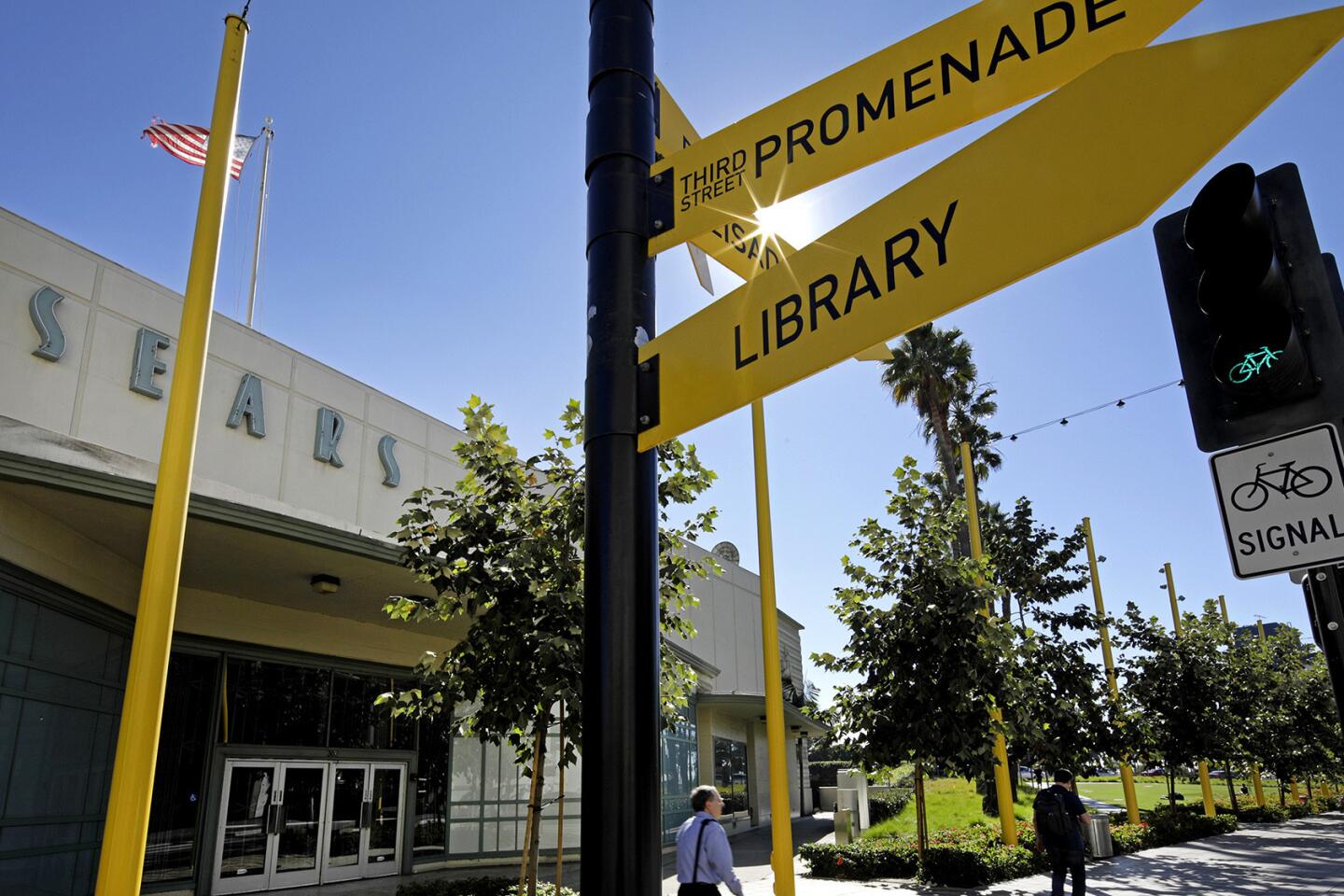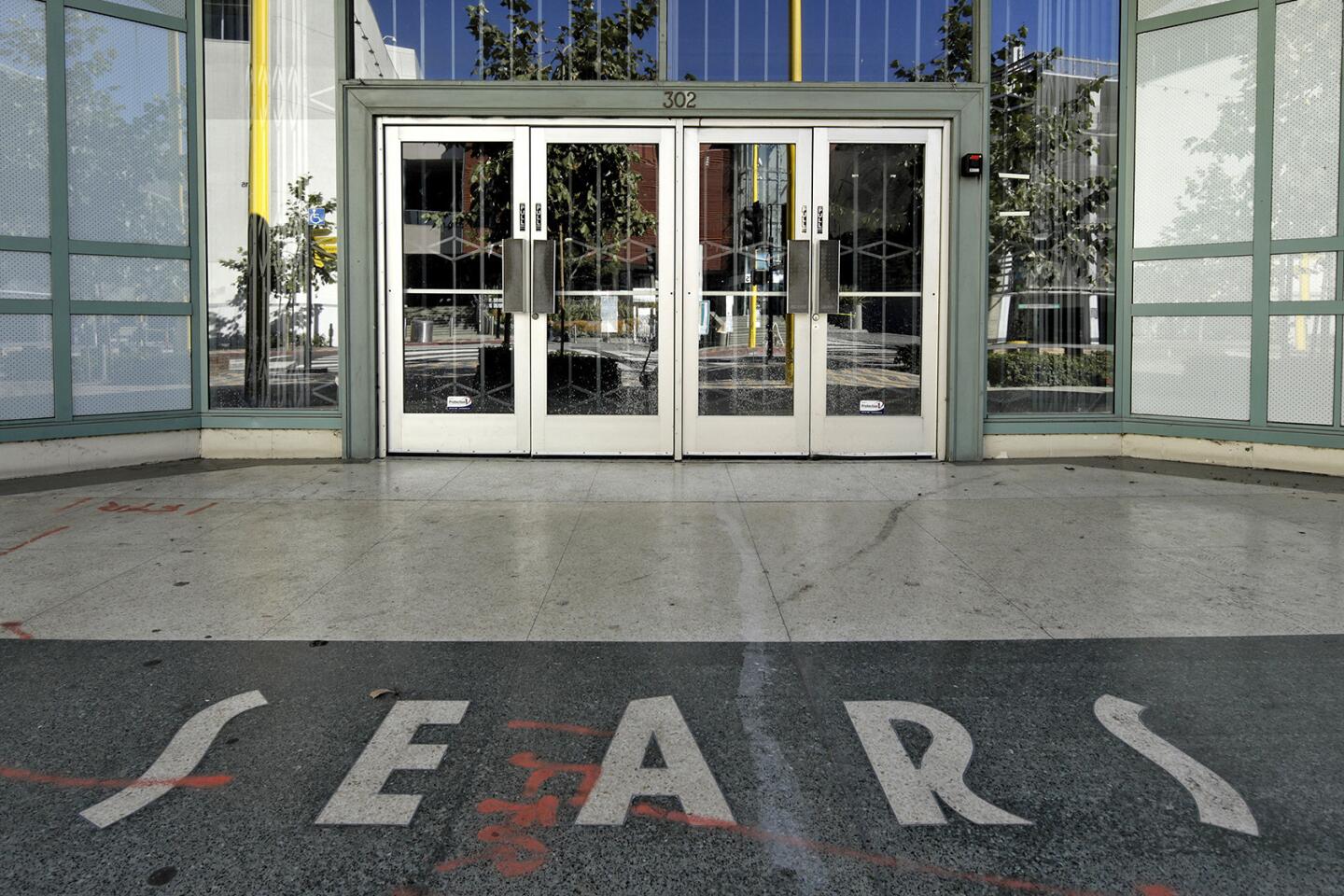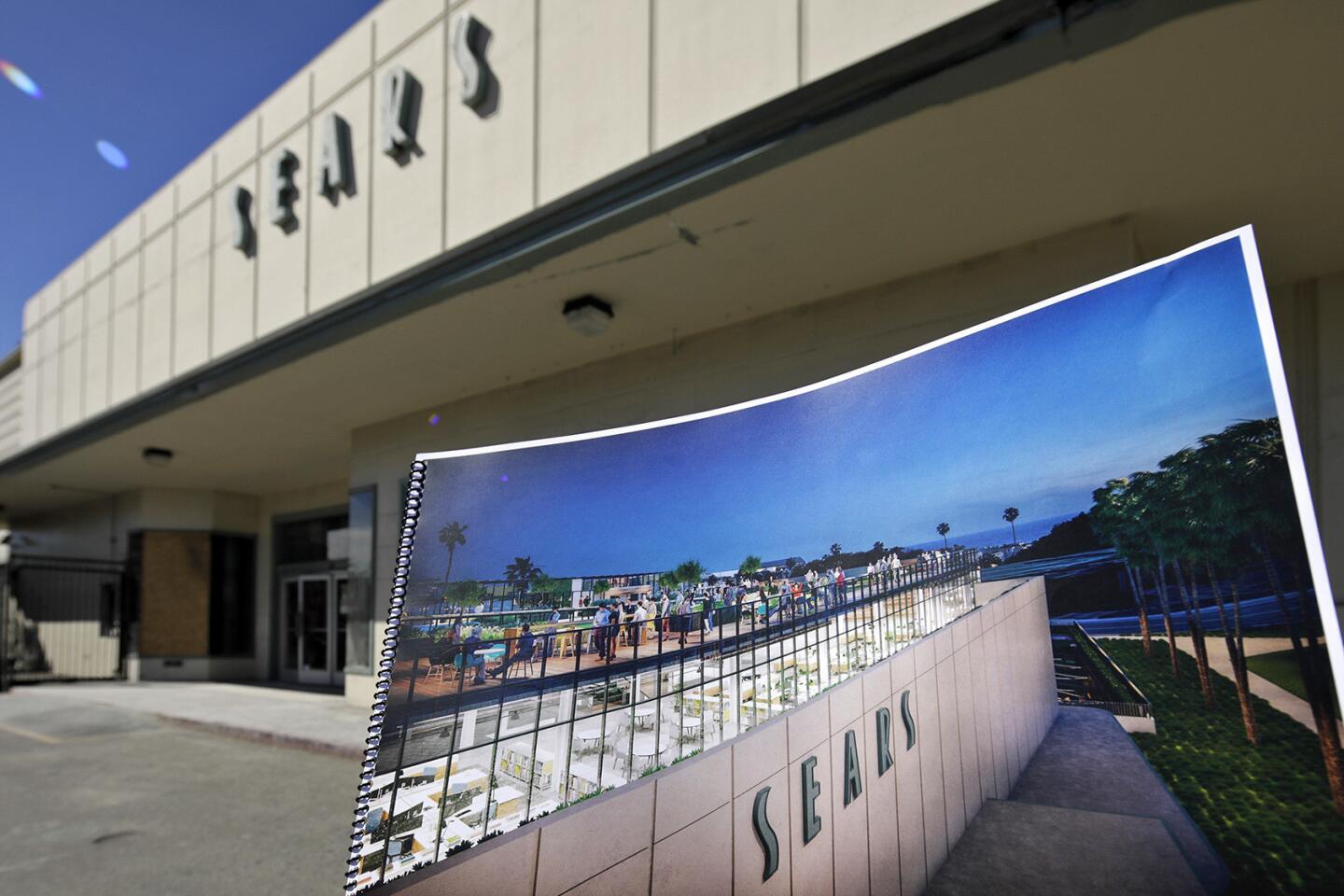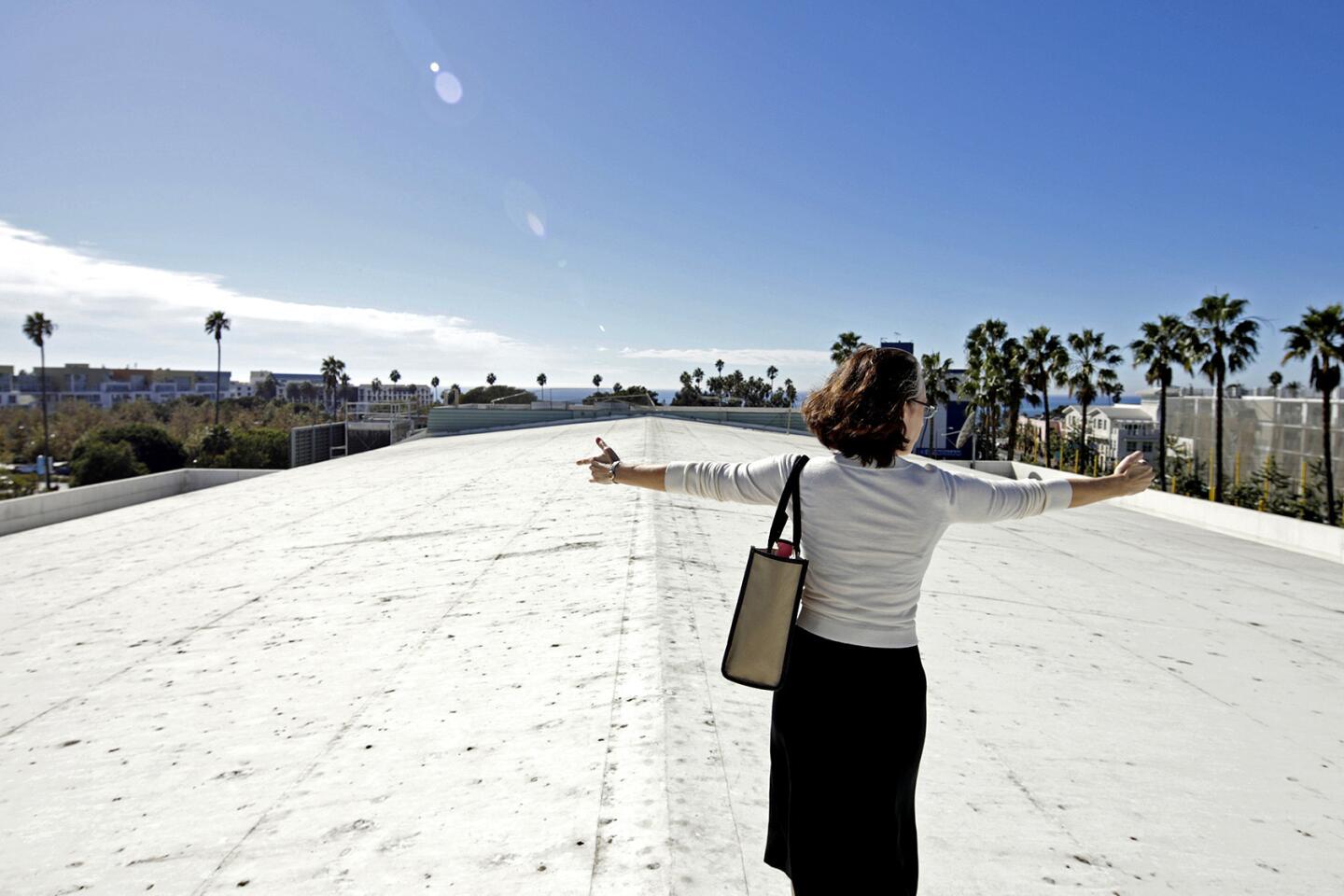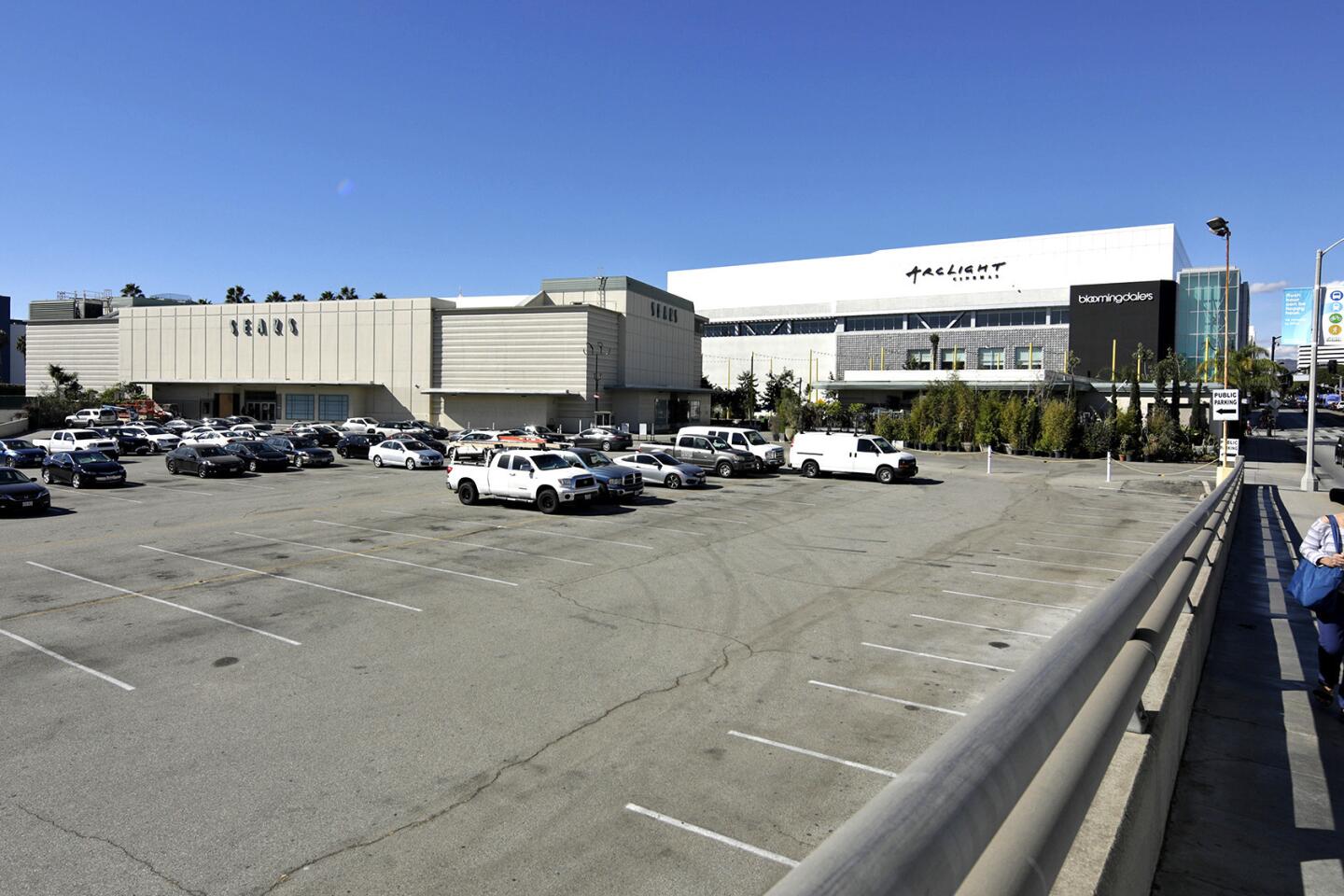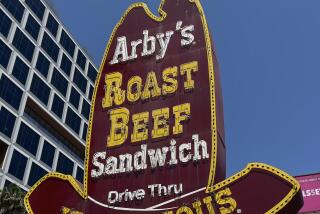Vacant Santa Monica Sears getting a second life with a $50-million makeover
The vacant Sears department store in downtown Santa Monica is poised for an extreme makeover that will turn the former down-to-earth purveyor of general merchandise into a swanky place to work, eat or grab a beer.
Soon the Art Deco landmark will be home to sun-drenched offices for rent with a rooftop garden and a market hall where vendors sell food, drinks and other wares such as books or clothing. It will be renamed the Mark 302.
The $50-million renovation is yet another example of how developers are repurposing the growing number of empty big-box stores left behind by fading traditional retailers — especially in desirable locations.
And it would be hard to find a belly-up store in a better locale.
When this one opened on Colorado Avenue in 1947, it was on the edge of the business district of a sleepy blue-collar beach town. The Santa Monica Freeway did not exist.
Today, the city is one of the wealthiest in the state, and the building stands at the terminus of the Expo light rail line, across the street from Santa Monica Place shopping center and a short walk from Santa Monica Pier.
“It’s a premier, crown-jewel asset — definitely one to be excited about,” developer Kacy Keys said.
The Sears was one of many department stores that opened in the years immediately after World War II to capitalize on the booming growth of Southern California and the pent-up consumer demand unleashed once the war ended. It was the 10th Sears store in Los Angeles County.
Keys visited the Santa Monica store as a child in the 1970s and remembers running around with her brother and munching free popcorn, a gustatory perk fondly recalled by others who grew up in the neighborhood.
Today, Keys oversees development in the West for Seritage Growth Properties, a New York real estate investment trust that owns 253 Sears and Kmart stores that could potentially be redeveloped.
Seritage gained control of the stores in 2015 as part of a $2.7-billion deal that involved leasing most of them back to Sears Holding Corp., which also owns Kmart. Declining sales have forced Sears to shutter more than 200 stores this year.
The Santa Monica store, which closed in April, is in for big changes starting with temporary removal of the roof to make way for seismic upgrades and the creation of an atrium. In the design by House & Robertson Architects, holes will be cut in the floor plates in the middle of the building to allow the atrium’s natural light to reach the basement.
A fourth story will be added by capturing attic space between the third floor and the roof that was previously used for storage. The roof will be restored as a landscaped and furnished outdoor deck with ocean views.
The roof will be an amenity for tenants of the office space for rent on the top two floors. Keys predicts that a single tenant will take all 50,000 square feet of offices.
“We expect a Silicon Beach-type tenant,” she said.
Santa Monica is flush with technology-related tenants who can afford to pay the neighborhood’s steep rents. Santa Monica office landlords typically ask for more than $6 per square foot per month, almost twice as much as in downtown Los Angeles.
Real estate broker Rafael Padilla of Par Commercial Brokerage, who also got popcorn and candy at the Sears store as a boy, said he does not doubt the building will get plenty of suitors.
“It’s kind of an oasis — not an office building standing among other office buildings,” Padilla said. “For those who want to stand out, it satisfies that desire.”
Santa Monica officials have approved Seritage’s plans, and preliminary work hollowing out the old steel and concrete structure is complete. Nine openings will soon be restored to the ground floor when Seritage rips off the wooden covers to spaces that used to hold display windows.
That should help create an airy market hall for about 32 vendors on the first floor and the basement, Keys said. An outdoor space on the west side where trucks used to unload will become a beer garden.
Preservation of the Sears building was important to the community because it has architectural and cultural significance, said Carol Lemlein, president of the Santa Monica Conservancy’s board of directors.
It was designed by architect Roland Crawford in a late Art Deco style called Streamline Moderne, known for curving forms and long horizontal lines. Crawford designed several Los Angeles-area buildings including the Brentwood Country Mart and the Times-Mirror building in downtown Los Angeles.
“The architect was relatively well-known at the time and it was just a very big deal to have a store of that sort in Santa Monica,” Lemlein said.
Seeing it remain intact was a priority for the conservancy, which supported Seritage’s plan to reuse the existing building mostly as-is.
“It’s a really interesting design to us because it accomplishes a seismic retrofit as well as making an attractive building for adaptive reuse without altering the exterior significantly,” Lemlein said.
What to do with vacant retail buildings is increasingly becoming an issue as the pace of department store closures accelerates amid online competition and changing consumer tastes. Macy’s and J.C. Penney, which once dominated the retail landscape, have closed hundreds of stores, but the bloodletting is not finished.
Public companies that own department stores and other chain stores are under pressure to close underperforming physical locations and build their e-commerce, said retail analyst Garrick Brown of real estate brokerage Cushman & Wakefield.
Even brisk Christmas shopping in the weeks ahead shouldn’t stem the tide, he said.
“You will see a wave of closures even though we will have the best holiday season since the recession,” Brown said. “It’s not unforseeable that next year 1,000 department stores will close.”
Many of those stores will be in malls and the effect will be devastating, he said. Though well-located malls may be able to quickly repurpose the space, “for some others it will be a blow that starts a death spiral.”
Big mall landlords are already shedding underperforming malls and lavishing improvements on their proven winners to keep shoppers coming back. Industry giant Westfield Corp. has trimmed its mall count even as it just finished a makeover of its Westfield Century City mall it valued at $1 billion. That included adding an Eataly, a popular Italian food emporium.
The average Seritage Sears site including the parking lot is about 14 acres, Keys said, which makes each one “its own puzzle to solve.”
Stores in less urban areas may be converted to warehouses or other industrial uses, Keys said, or made into public storage centers.
In general, though, Sears picked locations that remain desirable, Keys said. A portion of Westminster Sears in Orange County may be turned into residential apartments — another option that many developers are looking at.
In San Diego, a Sears at Westfield UTC shopping center just east of La Jolla will probably be split in half to create a center courtyard and the two remaining pieces will be reconfigured for multiple shops and restaurants.
The Kmart site near UC Riverside may be turned into student housing. Other former Sears or Kmarts could be repurposed for use by institutions such as schools or local governments.
The Santa Monica Sears is on 3 acres, smaller than average, having lost some parking to freeway construction decades ago. But it still has enough room for more development in the future if the city approves, which Keys said might be housing.
City officials may approve more density at the site in part because it is steps away from the terminus of the Expo Line, which carries 64,000 riders each weekday.
Retail analyst Brown said the former Sears in Santa Monica is nothing less than an “unparalleled opportunity.” The local conservancy too is counting on its comeback.
“We are very optimistic,” Lemlein said. “We expect the project is going to give the building a very fruitful life for decades to come.”
Twitter: @rogervincent
More to Read
Inside the business of entertainment
The Wide Shot brings you news, analysis and insights on everything from streaming wars to production — and what it all means for the future.
You may occasionally receive promotional content from the Los Angeles Times.
